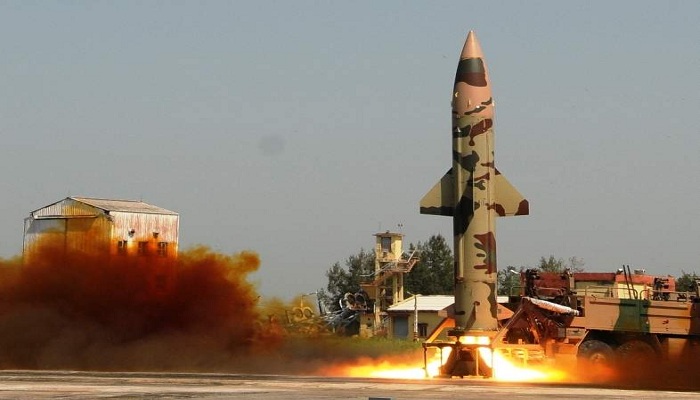
Fear of Prithvi missiles : Pakistan to transfer nuclear technology to North Korea…
In 1962, Soviet Union helped North Korea set up its first nuclear research facility – Yongbyon Nuclear Scientific Research Center. That reactor was used to produce radioactive isotopes for medicinal, industrial and research purposes. North Korea may have tried to explore weapon capabilities with whatever technology Russians gave them.
Pakistan’s fear of India’s advances in missile development:
But what definitely put North Korea’s nuclear weapons’ development on track was proliferation by Pakistan. What drove Pakistan to join hands with North Korea was India’s Integrated Guided Missile Development Program in 1983 aimed at achieving self-sufficiency in the development and production of wide range of ballistic missiles. Prithvi was the first missile to be developed under the program. Developed as a battlefield missile, Prithvi could carry a nuclear warhead in its role as a tactical nuclear weapon.
At that time, Pakistan did not have a missile to match Prithvi’s striking capabilities so they approached North Korea for Nodong missiles. In exchange, North Korea demanded centrifuge technology from Pakistan. A deal was struck and North Korea and Pakistan began to share missile expertise in 1992.
North Korea, Pakistan and the AQ Khan network:
In 1993, December, former Pakistan PM Benazir Bhutto initiated a deal with North Korea for Nodong missiles. Pakistan, at that time, was also worried about India’s rapid advances in missile technology. Father of Pakistan’s nuclear bomb Dr Abdul Qadeer Khan then stepped in to provide Pakistan with an alternative nuclear weapons delivery option by obtaining intermediate-range liquid-fuel ballistic missiles from North Korea.
In November 1995, North Korea and Pakistan apparently struck a deal for 12-25, Nodong missiles, and at least one transporter erector launcher or mobile erector launcher, 44 the delivery of which reportedly began in 1996-97.
It is widely assumed that the provision of centrifuge technology was part of the deal and was given to North Korea in exchange for the Nodong missiles, according to a book “A.Q. Khan and onward proliferation from Pakistan”.
AQ Khan is also said to have helped Iran in developing nuclear weapons technology. AQ Khan’s nuclear network came to light when American intelligence operatives about five giant cargo containers full of specialized centrifuge parts being loaded into one of the nondescript vessels that ply the Straits of Malacca.
The shipment was later seized near Suez Canal. That seizure led to the unravelling of a trading network that sent bomb-making designs and equipment to at least three countries — Iran, North Korea and Libya.

Post Your Comments